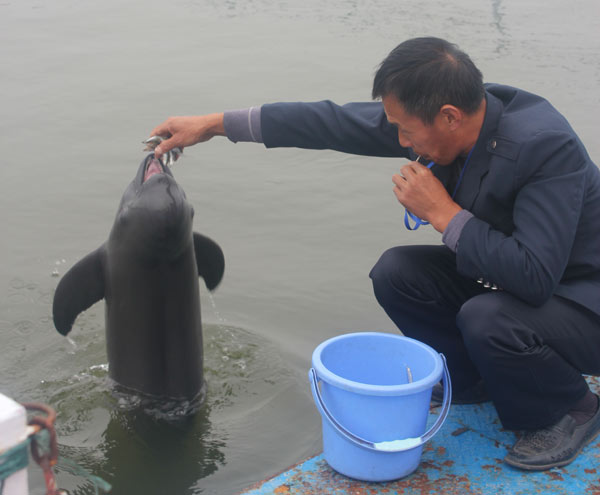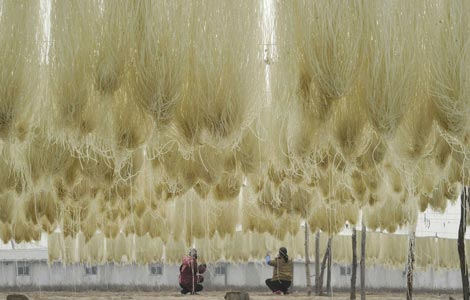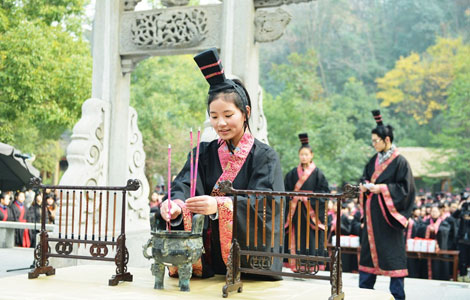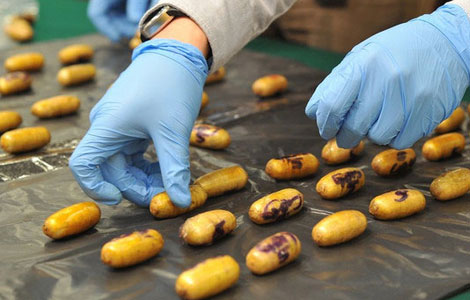

 |
|
Ding Zeliang feeds Tiantian at the Tian'ezhou oxbow natural reserve. Tiantian gave the meal to his pregnant mate E'e. Deng Zhangyu / China Daily |
"I spend more time with the porpoises than with my family," Ding says, while selecting the types of fish the couple enjoys most from a catch.
Porpoises are picky about courtship. So smaller populations make pairing difficult.
Ding, the feeder, explains it took five years for Tiantian and E'e to pair up after the staff put them together.
He serves as something akin to their relationship counselor when they bicker, he says.
"I talk with them when they fight," Ding says.
"But, sometimes, they get angry and swim away during our discussions."
Ding became their feeder after the couple was injured by ice during the 2008 blizzard.
The animals respond to the voice of the man who feeds them three times a day.
"If someone else comes to feed them, they peek out and quickly hide," Ding says, laughing.
"If I call their names, they swim up to play with me. Sometimes, they're naughty and shoot water at me from their blowholes."
Sometimes they miss. Sometimes they don't.
Ding used to be a fisherman. But he now feeds fish caught by others to the aquatic mammals. Many local fishermen like him are turning to other occupations as fish become scarcer.
Fishing isn't allowed on the reserve unless it's to feed the porpoises.
Other porpoises have visited Tiantian and E'e daily since they were relocated to the oxbow, reserve administrator Cheng Xianhong recalls.
"They all swim together for days," Cheng says.
Many of the wild porpoises also came to the reserve after being injured in nearby locations. And porpoises previously held in captivity in the reserve — such as Bao and Zhouzhou, who spent two years cared for by the staff before being released to the wild — even visit during Spring Festival, China's traditional annual family reunion period.
"They swim around the pen for about 20 days (during the festival)," Ding says.
China contains 12 finless porpoise reserves at the city level or above, Gao says. Those in Dongting and Poyang lakes are the only places outside the Yangtze where the species is found.
But conservationist Gao Baoyan, who has studied the creatures for a decade, says the Tian'ezhou oxbow natural reserve is the most successful.
Perhaps E'e's calf's greatest challenge after birth will be a shortage of its mother's milk, she says. This generates a high death rate among the subspecies' young.
But whatever the future holds — even if the calf doesn't come to term, or no matter how long it survives — the pregnancy delivers new prospects for the porpoises' survival with minimal human intervention.
Contact the writer at dengzhangyu@chinadaily.com.cn
Liu Kun contributed to this story.







